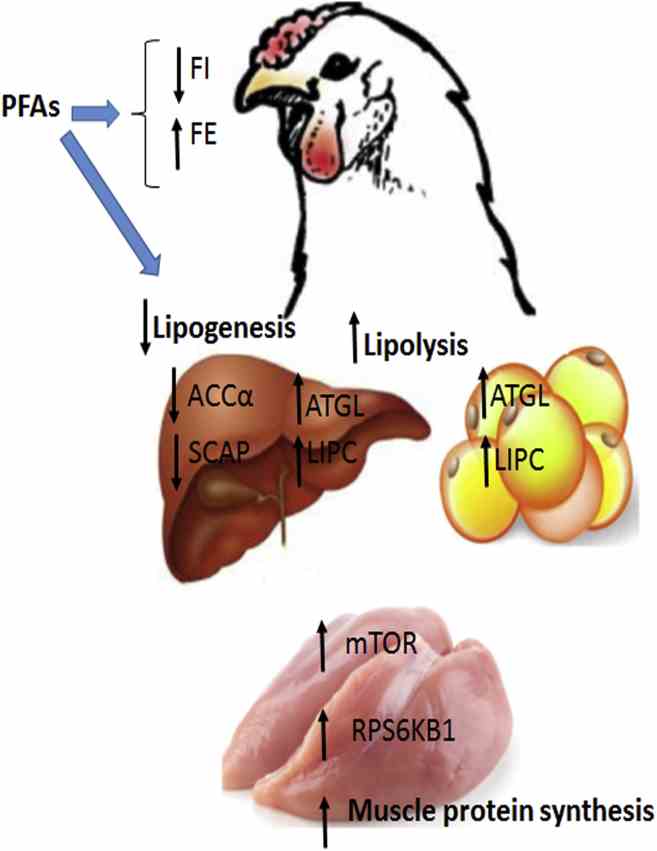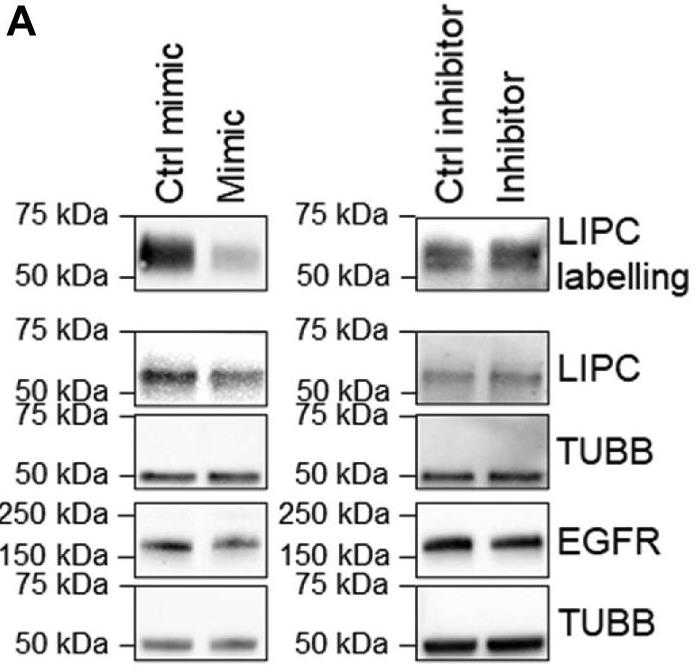Lipc
-
Official Full Name
lipase, hepatic -
Overview
LIPC encodes hepatic triglyceride lipase, which is expressed in liver. LIPC has the dual functions of triglyceride hydrolase and ligand/bridging factor for receptor-mediated lipoprotein uptake. -
Synonyms
LIPC;lipase, hepatic;HL;HTGL;LIPH;HDLCQ12
Recombinant Proteins
- Human
- Bacillus subtilis
- Mouse
- Pig
- Rat
- E.coli
- E. coli or Yeast
- Mammalian Cell
- HEK293
- HEK293T
- Mammalian cells
- His
- His&GST
- Non
- Myc&DDK
- His&Fc&Avi
- Flag
- His&SUMO
Background
What is LIPC Protein?
LIPC, also known as hepatic lipase, mostly hangs out in the liver and is crucial for fat metabolism in the body. It's all about managing cholesterol levels and handling triglycerides in HDL and LDL particles. Basically, this enzyme tweaks these lipoproteins by breaking down the triglycerides they contain. LIPC's activity is crucial in influencing HDL cholesterol levels and general lipid metabolism. Additionally, variations in the LIPC gene are connected to conditions like Alzheimer's disease, coronary artery disease, and different forms of diabetes. Its expression is biased towards the liver and shows significant relevance in studies relating to metabolism and cardiovascular health.
What is the Function of LIPC Protein?
The LIPC protein, often referred to as hepatic lipase, is crucial for handling fats in the body, especially in the liver. It assists in breaking down lipoproteins—particles that carry fats such as cholesterol through the blood. Essentially, LIPC targets these lipoproteins, stripping triglycerides and aiding in their transformation. This is crucial for maintaining cholesterol levels in the body and ensuring fats are properly metabolized. Beyond its digestive roles, LIPC is also linked to conditions like coronary artery disease and diabetes, highlighting its significance in broad cholesterol and fat management processes within the body.
LIPC Related Signaling Pathway
Hepatic lipase, often called LIPC, is real important for several signaling pathways that manage how our bodies deal with fats and heart stuff. It's a key player in the insulin pathway, making sure sugar and fat levels are steady. It also hooks into the AMPK pathway for keeping our energy in check, and the PPAR pathway, which has a hand in managing inflammation and our fat metabolism. LIPC also ties into the MAPK pathway for dealing with stress and heart issues, and the Wnt pathway, which is key for cell fate decisions and tackling atherosclerosis. Plus, it's tied to the PI3K-Akt pathway, which is all about cell survival and metabolism. And when it comes to turning genes on and off, LIPC's gene promoter is under the control of factors like HNF4α. So, LIPC isn't just breaking down lipids; it's a central part of a complex web of pathways that keep our lipids in check and our hearts ticking. Understanding how LIPC fits into this network could help us find new ways to treat lipid-related disorders and heart diseases.
LIPC Related Diseases
Hepatic lipase, better known as LIPC, is tied to a bunch of health issues, mostly because of how it handles fats in the body. It plays a role in things like Alzheimer's and coronary artery disease, which is all about your heart's blood supply. When LIPC isn't doing its job right, it might lead to mixed hyperlipidemia, where your blood's got too many fats flying around. It's also a key player in type 2 diabetes, and could even be a hint that someone's prone to obesity, or struggles with how their body handles insulin, like in type 1 diabetes. All in all, LIPC is an important piece of the puzzle in understanding these conditions.

Fig1. Schematic representation summarizing the integrated effects of PFA-enriched diets on intermediary metabolism in the broilers. (Joshua J Flees, 2021)
Bioapplications of LIPC
Recombinant LIPC protein, or hepatic lipase, serves various roles in research and industry, primarily related to its lipid-processing capabilities. In the research domain, it's utilized to study lipid metabolism and its impact on diseases like cardiovascular conditions and diabetes. Scientists often use it in biochemical assays to understand its enzymatic activity and interaction with lipoproteins. In industrial settings, LIPC finds its application in developing therapeutic strategies aimed at managing cholesterol and triglyceride levels, contributing to cardiovascular drug research. Additionally, it's explored for its potential in biotechnological applications where lipid modification is key, leveraging its unique ability to process lipid particles.
Case Study
Case Study 1: GenevièveF Desrochers, 2022
MicroRNAs, or miRNAs, are short RNA molecules that don't code for proteins themselves but play a role in dialing down protein production, impacting cell systems in broad ways. Take miR-27b, for instance; it's linked to managing lipid regulatory pathways in the liver and reacts to the presence of hepatitis C virus (HCV). But what exactly miR-27b targets wasn't fully clear until researchers used a specialized protein profiling method to pinpoint what it acts on directly and indirectly. One key player turned out to be hepatic lipase C (LIPC), which is crucial for lipid processing and is notably influenced by miR-27b levels. Moreover, tweaking miR-27b levels with RNA mimics and inhibitors showed it controls several transcription factors like Jun, PPARα, and HNF4α that also affect LIPC. LIPC has been found to impact HCV's life cycle and helps lower intracellular triglyceride levels, which HCV needs for its survival.

Fig1. Representative sample of Western blotting on FP-B labeled enriched fraction and cell lysates.

Fig2. Representative Western blot against LIPC in the glycosylated fraction and LIPC expression.
Case Study 2: Ruxia Deng, 2022
Hepatocellular carcinoma (HCC) is a big player among aggressive liver cancers. TUSC3, a component of the endoplasmic reticulum's OST complex, is essential for protein folding, but its link to HCC was fuzzy until now. This study dove into TUSC3's role in HCC, finding that levels of TUSC3 dip in HCC tissues, making tumors larger and more poorly differentiated. This also nudged them into more advanced stages. Lowering TUSC3 levels amped up cancer cell growth and spread, but boosting them had the opposite effect. Interestingly, TUSC3 seems to target LIPC—a protein made by liver cells that actually acts as a brake on HCC. Plus, TUSC3 influences the process where cells change type, known as EMT, via the LIPC/AKT pathway.

Fig3. Western blot analysis confirmed the ectopic expression of LIPC protein.

Fig4. TUSC3 co-immunoprecipitated with LIPC in HCC cell MHCC97H.
Quality Guarantee
High Purity
.jpg)
Fig1. SDS-PAGE (LIPC-269H)
.
.jpg)
Fig2. SDS-PAGE (LIPC-3725H)
Involved Pathway
Lipc involved in several pathways and played different roles in them. We selected most pathways Lipc participated on our site, such as Glycerolipid metabolism,Metabolic pathways, which may be useful for your reference. Also, other proteins which involved in the same pathway with Lipc were listed below. Creative BioMart supplied nearly all the proteins listed, you can search them on our site.
| Pathway Name | Pathway Related Protein |
|---|---|
| Glycerolipid metabolism | DGKG,PPAP2C,ALDH9A1B,Akr1b3,LIPG,ALDH2.1,LIPCA,AKR1B8,AGPAT6,AGPAT5 |
| Metabolic pathways | EXT1,TYRP1,GALNT5,LSS,GLULC,UGT2B15,HAL,GLUL,ENO1B,PCYT1BA |
Protein Function
Lipc has several biochemical functions, for example, apolipoprotein binding,heparin binding,low-density lipoprotein particle binding. Some of the functions are cooperated with other proteins, some of the functions could acted by Lipc itself. We selected most functions Lipc had, and list some proteins which have the same functions with Lipc. You can find most of the proteins on our site.
| Function | Related Protein |
|---|---|
| apolipoprotein binding | LRP1,LRP4,PCSK9,LPA,CANX,LRP6,ABCA1,VLDLR,PLG,MAPT |
| phospholipase activity | ABHD2A,LPL,LIPG,NOTUM1A,LIPN,PLA2G4AA,PLA2G10,LIPM,Cel,ABHD6 |
| heparin binding | GM4980,PLA2G2D,SELL,RPL22,THBS2,CTGFA,CTGFB,OGN,CLEC3B,LPA |
| low-density lipoprotein particle binding | MSR1,SCARB1,SCARF1,CDH13,THBS1,COLEC12,ANKRA2,SORL1,PCSK9,LDLR |
| triglyceride lipase activity | LIPE,CES5A,PNLIPRP1,PNPLA3,CES1D,CES1,PNPLA2,LPL,CEL.1,LIPCA |
Interacting Protein
Lipc has direct interactions with proteins and molecules. Those interactions were detected by several methods such as yeast two hybrid, co-IP, pull-down and so on. We selected proteins and molecules interacted with Lipc here. Most of them are supplied by our site. Hope this information will be useful for your research of Lipc.
ADHFE1
Resources
Related Services
Related Products
References


